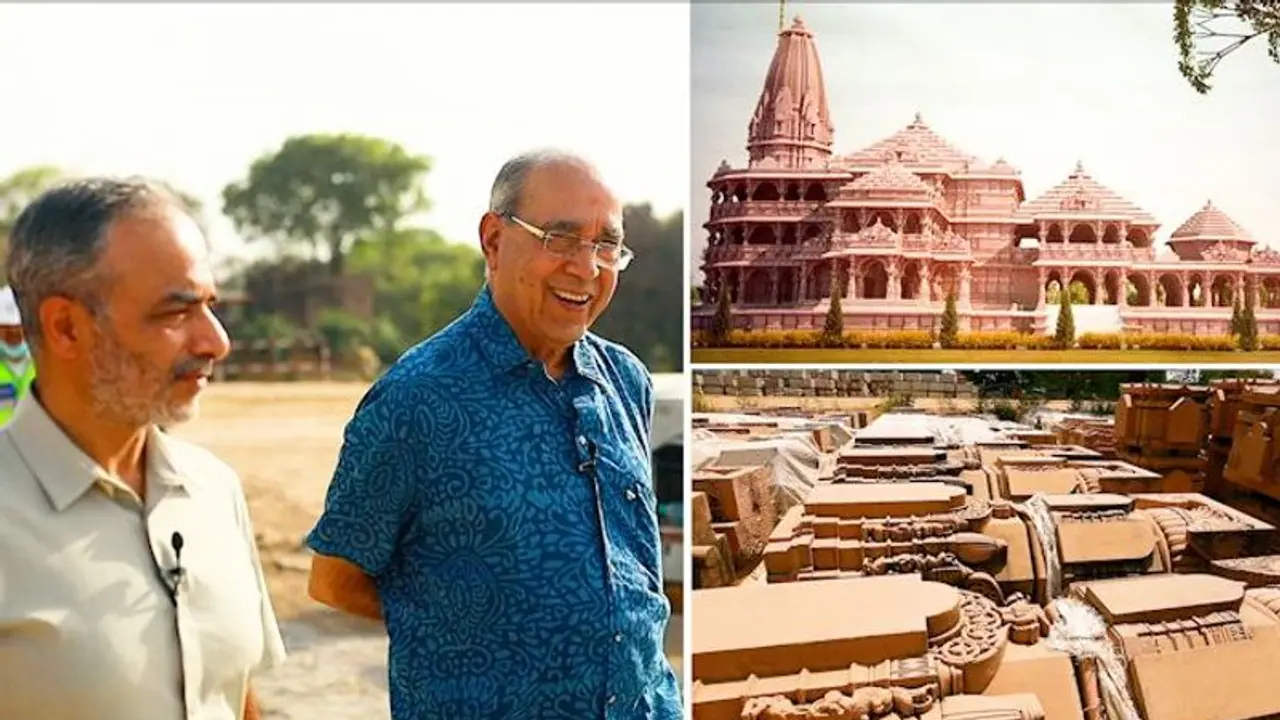Nripendra Misra, the chairman of the Shri Ram Janmabhoomi Teerth Kshetra Trust's temple construction committee, gives Asianet News' Rajesh Kalra exclusive access to the construction site like never before and highlights several interesting aspects related to the temple.
All eyes are on December 2023. That's when devotees of Lord Ram will be able to offer prayers to their beloved deity at the grand new temple in Ayodhya.

A symbol of exquisite craftsmanship and extreme engineering, the grand Ram Temple in Ayodhya will host millions of devotees from across the country when its doors would open.
It will take another year, perhaps the end of 2024, for craftsmen will continue to chisel the Bansi Pahad stone brought from Rajasthan and give the finishing touches to Lord Ram's abode.
The construction of the 54,700 square feet temple over 2.7 acres is going on in full swing. The man overseeing the work on the site is Nripendra Misra, a career bureaucrat who is literally leaving no stone unturned to ensure the glory of Lord Ram and Ayodhya is restored to its pristine form.
Asianet News' Rajesh Kalra travelled nearly 700 kilometres to meet the former Principal Secretary to Prime Minister Narendra Modi and get a sense of the enormity of the challenge before Misra.
Misra, who was elected as the chairman of the Shri Ram Janmabhoomi Teerth Kshetra Trust's temple construction committee in February 2020, highlighted several interesting aspects related to the temple.
WATCH THE FULL INTERVIEW
On the site, there is hectic activity. Construction workers drilling, massive cranes lifting granite stones, concrete mixing trucks... the intensity of the work on-site is undeterred by the harsh April sun.
During the extensive interview, Misra spoke at length about the challenges posed by the weather thus far, and how the entire base of the temple is iron-free and made of compacted engineered soil.
"Our best attempt is that by December 2023, we may be able to complete the ground floor of the 'Garbha Griha' (sanctum sanctorum). There are five mandaps which go up to the east of the temple. Those five mandaps will be on the ground floor. Then the first floor will be built with three mandaps and finally, the second floor will have two mandaps. That's how the main temple will constructed," Misra said.
"You can imagine the amount of work left. I can predict that by end of 2024 all the floors may be completed. The inner carvings and iconography would still continue to be done," he added.
But the challenge for Misra does not end with building the temple. There is a 67-acre temple complex that too would need to be developed near simultaneously.
"There is a 67-acre area around the temple which is called the temple complex. There we have other ideas that we are going to do. For example, we will have temples dedicated to Valmiki, Nishad and Sabari Mata. The idea is that we must have temples which will make all communities, people of all faith, believe that this (Lord Ram) is our 'Bhagwan' and that he has not been hijacked by any particular community," he said.
Among the interesting details that emerged during the interview included one about a plan to offer a celestial treat to all devotees visiting Ayodhya.
Misra said, "Lord Ram was born on Ram Navami. The belief is that he was born around noon. So what we are trying to do is that at noon, we are trying to direct the rays of the sun for five to 10 minutes through a technical process to reflect on the forehead of Lord Ram."
There are also other nuances that have been incorporated.
"The entrance on the east, the 'dwar' will be Gopuram style, which represents the temples of the south. We wanted to capture that as among the features," Misra said.
'Each material which is being used, each design and drawing that is being used, that is being done in IIT Chennai -- they are the initiators. That is tested by L&T and TCE (Tata Consulting Engineers). They tested. And finally, we have given the stability test for this agenda of 1000 years to the Central Research Building Institute. The CRBI has tested the entire load that will come onto the structure through simulations. In short, we are dependent on the best brains of this country. There is just one objective: how to make this temple durable for 1000 years and unique."
Also Read: Ayodhya Ram Mandir will be earthquake-proof. Here's how?
